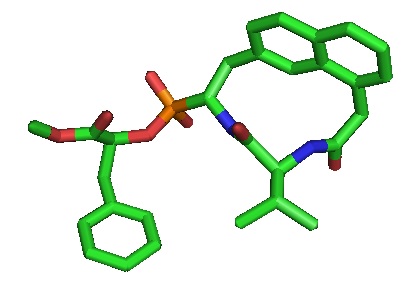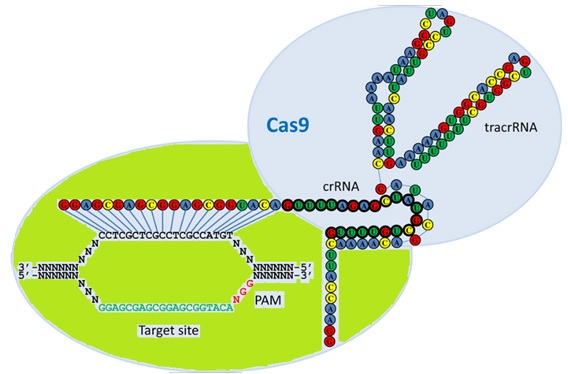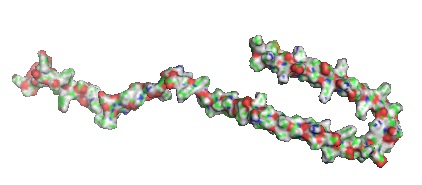|
|
|
Bio-Synthesis Newsletter - June 2019
|
Molecular Beacons for Cancer Point-of-Care Diagnostics
 “Point-of-Care” tools can positively impact current health care. Recently a research group reported a new version of molecular beacons useful for ‘Point-of-Care” diagnostics. Molecular beacons indicate the presence of specific nucleic acids in homogeneous solutions allowing the isolation of probe-target hybrids from an excess of hybridization probes during real-time monitoring of polymerase chain reactions in sealed tubes or when detecting RNA molecules, such as miRNA, within living cells. The photonic technique called Light Assisted Molecular Immobilization (LAMI) enables detection of miRNA with the help of molecular beacons together with a new type of molecular beacon constructs. The key to the success of this new tool is a light-activated peptide conjugated to the molecular beacon. The peptide allows the light-activated immobilization to thiol-reactive surfaces using UV light which covalently binds the peptide to the thiol-reactive surface. When the probe encounters a target molecule, it forms a hybrid that is longer and more stable than the stem and the molecular beacon undergoes a spontaneous conformational reorganization that forces the stem apart, and causes the fluorophore and the quencher to move away from each other, leading to the restoration of fluorescence enabling the detection of the target. “Point-of-Care” tools can positively impact current health care. Recently a research group reported a new version of molecular beacons useful for ‘Point-of-Care” diagnostics. Molecular beacons indicate the presence of specific nucleic acids in homogeneous solutions allowing the isolation of probe-target hybrids from an excess of hybridization probes during real-time monitoring of polymerase chain reactions in sealed tubes or when detecting RNA molecules, such as miRNA, within living cells. The photonic technique called Light Assisted Molecular Immobilization (LAMI) enables detection of miRNA with the help of molecular beacons together with a new type of molecular beacon constructs. The key to the success of this new tool is a light-activated peptide conjugated to the molecular beacon. The peptide allows the light-activated immobilization to thiol-reactive surfaces using UV light which covalently binds the peptide to the thiol-reactive surface. When the probe encounters a target molecule, it forms a hybrid that is longer and more stable than the stem and the molecular beacon undergoes a spontaneous conformational reorganization that forces the stem apart, and causes the fluorophore and the quencher to move away from each other, leading to the restoration of fluorescence enabling the detection of the target.
|
|
Read More
|
|
|
Cyclic peptides as scaffolds for novel drugs
 Cyclic peptides offer a promising scaffold for the development of novel drugs due to their flexible ability to bind a wide range of target molecules.Cyclic peptides usually contain 5 to 14 amino acids withmolecular weightsbetween 500 to 2000 Da. The size and the diversity of functional groups used allow the contact area of these peptides to be large enough to provide for high selectivity with strong binding affinities. Cyclic peptides can be designed with structural and functional features needed for pharmaceutical agents. Structural constraints of cyclization help to resist degradation by proteases in the blood, thereby increasing their stability in serum. Furthermore, cyclization also facilitates passage through the cell membrane enabling the targeting of intracellular targets. Cyclic peptides can be synthetically synthesized using solid phase peptide synthesis. Cyclic peptides offer a promising scaffold for the development of novel drugs due to their flexible ability to bind a wide range of target molecules.Cyclic peptides usually contain 5 to 14 amino acids withmolecular weightsbetween 500 to 2000 Da. The size and the diversity of functional groups used allow the contact area of these peptides to be large enough to provide for high selectivity with strong binding affinities. Cyclic peptides can be designed with structural and functional features needed for pharmaceutical agents. Structural constraints of cyclization help to resist degradation by proteases in the blood, thereby increasing their stability in serum. Furthermore, cyclization also facilitates passage through the cell membrane enabling the targeting of intracellular targets. Cyclic peptides can be synthetically synthesized using solid phase peptide synthesis.
|
|
Read More
|
|
|
mRNA can be converted to gRNA
 CRISPR/Cas9 allows genome editing employing guide RNA (gRNA) libraries for genetic screening. Arakawa recently described a method for the construction of gRNA libraries from mRNAs. The technique uses semi-random primers containing a PAM sequence complementary to DNA taken directly from mRNA sequences. After sequence amplification, the 20-mer sequences adjacent to the PAM sequence is cut out using type IIS and type III restriction enzymes for the creation of a gRNA library. CRISPR/Cas9 allows genome editing employing guide RNA (gRNA) libraries for genetic screening. Arakawa recently described a method for the construction of gRNA libraries from mRNAs. The technique uses semi-random primers containing a PAM sequence complementary to DNA taken directly from mRNA sequences. After sequence amplification, the 20-mer sequences adjacent to the PAM sequence is cut out using type IIS and type III restriction enzymes for the creation of a gRNA library.
Arakawa states that this approach does not require prior knowledge about the target DNA sequences, making it applicable for the study ofany species using CRISPR-Cas9.
|
|
Read More
|
|
|
An Anti-Parkinson Mechanism is found
 Fibrils that clump or aggregate together in neurons contribute to the progression of Parkinson’s disease. Scientists at ETH Zürich recently found that the S-phase kinase-associated protein 1/cullin-1/F-box protein is part of an adaptive response triggered by the neuronal uptake of α-synuclein fibrils . The researcher suggested that gene therapy could be used to stabilize the SCF complex in nerve cells to increase its activity. However, is still unclear whether effective therapies can be developed in the near future. Fibrils that clump or aggregate together in neurons contribute to the progression of Parkinson’s disease. Scientists at ETH Zürich recently found that the S-phase kinase-associated protein 1/cullin-1/F-box protein is part of an adaptive response triggered by the neuronal uptake of α-synuclein fibrils . The researcher suggested that gene therapy could be used to stabilize the SCF complex in nerve cells to increase its activity. However, is still unclear whether effective therapies can be developed in the near future.
|
|
Read More
|
|
|
|
|
Bio-Synthesis, Inc.
800 Mario Court, Lewisville, TX 75057, USA
Toll Free: 800.227.0627 | 1.972.420.8505 (Intl.)
|
|
|
|
|
|